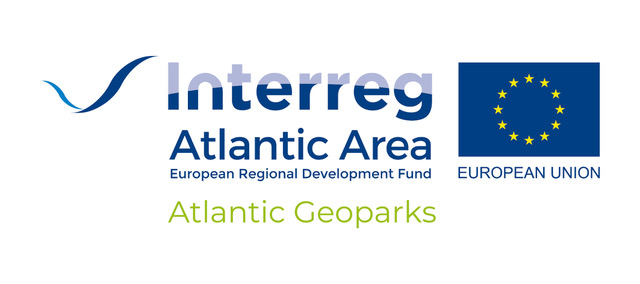Fossil replicas
a case study provided by Basque Coast UNESCO Global Geopark, Spain
The coastal outcrop of flysch in the Basque Coast Geopark is known worldwide because of its chronostratigraphic and palaeontological (fossil) value. The outcrop is composed of a thick pile – more than 5000m – of deep marine clays, marls, limestone and sandstones deposited in the Bay of Biscay during the upper Cretaceous, Palaeocene and Eocene epochs. This huge series crops out along 10 km of beautiful and accessible sea cliffs and it is considered to be one the best outcrops in the world for the analysis of deep marine trace fossils. More than 40 different typologies have been described, including one holotype called Rotundusichneum zumayensis.
The natural erosion of the cliffs by the sea is very active and amounts to a clear threat to this huge palaeontological heritage. Its conservation presents a considerable challenge. Erosion is a natural geological process, but it is not related to the processes of fossilisation that gave rise to the threatened palaeontological heritage. Therefore, taking into account the principles of the geoconservation, we should act to ensure the preservation of the palaeontological heritage before it is washed by the sea. But, when and how should we act ?
The Basque Coast Geopark has defined a clear geoconservation strategy which attempts to maintain trace fossils in the outcrop as long as possible. The Geopark recognises that it cannot afford to preserve thousands of specimens, but not all the trace fossils have the same relevance. Depending on their abundance and the scientific and educative importance two different groups have been defined:
- Those trace fossils that are especially relevant and need to be watched every three months and extracted from the cliffs before they detach and fall down. Replicas can be also made.
- Those trace fossils that are more abundant and less relevant are collected from the bottom of the cliffs once they have been naturally dropped in a gathering campaign that must be organised every year. There are certain specific cases when the extent of the trace fossil can be too big or fractured to be extracted in a safe way. In these cases replicas have been made for the most important specimens.
All the collected and extracted specimens, together with the big replicas are stored and shown in the visitor centre at Zumaia. In addition to this, several media presentations have been organised each time a relevant specimen has been collected in order to underline the scientific importance of the section and the commitment of the geopark to its conservation.
The geoconservation strategy of the Basque Coast Geopark is based on science; it enables the preservation of a reasonable and representative amount of specimens and creates good material for education and opportunities for the promotion of the geopark.
